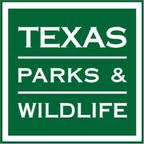
TPWD Reminds Hunters About Proper Deer Carcass Disposal
AUSTIN – With general deer hunting season opening this weekend, the Texas Parks and Wildlife Department is reminding hunters throughout the state to properly dispose of carcasses from harvested deer to help prevent the spread of infectious diseases in deer. It is particularly crucial for those taken inside the Trans-Pecos, South Central, and Panhandle Chronic Wasting Disease (CWD) Containment and Surveillance Zones.
“Because many hunters process their deer, they are key players in preventing environmental contamination or minimizing the spread of diseases such as CWD,” said Alan Cain, TPWD White-tailed Deer Program Leader. “One possible way that disease can spread is by the transportation and improper disposal of infected carcass parts.”
Deer can become infected with CWD if they come into contact with other infected deer or an environment contaminated with CWD prions. While CWD prions are found ubiquitously throughout the body of an infected deer, they are known to accumulate in the brain, spinal cord, eyes, spleen, and lymph nodes.
Additionally, hunters cannot take whole deer carcasses or carcass parts that contain brain, spinal cord, eyes, spleen, or lymph nodes out of the CWD Containment and Surveillance Zones or from another state or country that is known to have CWD.
“We recommend hunters in the CWD Containment and Surveillance Zones quarter deer in the field and leave all inedible parts at the site of harvest, or preferably dispose of in a landfill, or bury at the site of harvest if possible,” Cain said. “Proper disposal of carcass parts is good practice anywhere in the state, but especially critical in CWD zones.”
Cain also noted that hunters wishing to take an entire skinned or unskinned deer head to a taxidermist outside a CWD zone or from another CWD positive state or country might do so. However, they must obtain the Deer Head Waiver at any TPWD CWD check station or the TPWD CWD website. The completed waiver should be kept with the hunter or with the deer head until it reaches the taxidermist.
Hunters are urged to follow these safe handling recommendations:
Proper Carcass Disposal
- Avoid cutting through bones, spine, or brain when processing deer carcasses.
- If processing harvested deer in camp or at home, place carcass parts in trash bags and properly dispose of them through a trash service or landfill.
Safe Parts to Transport
- Quarters or other portions of meat with no part of the spine or head attached.
- The removal of excess tissue of hides or capes
- Antlers, including antlers attached to skull plates or skulls, cleaned of all muscle and brain tissue.
- The finished taxidermy products.
Carcass movement restrictions do not apply if the carcass remains inside a CWD zone. However, it is always recommended correctly to dispose of unused carcass parts.
Hunters who harvest deer and other CWD-susceptible species should check the Outdoor Annual online or through the mobile app to find check station requirements, dates, and hours of operation.
“Texas Game Wardens will be doing compliance checks to make sure hunters are meeting the requirements in the CWD restricted zones, and when bringing a big game from CWD positive states, which includes Colorado, New Mexico, and Wyoming,” said Region I Texas Game Warden Major Jason Huebner.
For the latest updates, call (800) 792-1112 or visit the CWD information page. A hunter who harvests a CWD-susceptible species outside a CWD zone and wishes to have the animal tested for CWD should contact a wildlife biologist in that area.








 EastTexasRadio.com Powered by Ten Stations
EastTexasRadio.com Powered by Ten Stations




